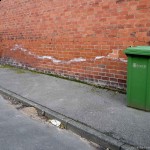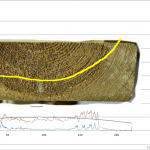Now that you have read part 1 and part 2, we can move onto more problematical damp. This is rising damp. Despite what some daft journalists and conservationists say, it’s very common. However, it is also often misdiagnosed and I’d say that quite a few expensive damp courses are installed when they needn’t be (I […]
Customer satisfaction = joy
This is a bit off the preservation topic, though it still involves my work. I had a long and busy day surveying today, around Leeds mainly, looking at rising damp, wet rot and wall tie corrosion. The traffic was awful. The following is copy of a letter that came in the post whilst I was […]
Cavity wall tie corrosion in Yorkshire (now getting much worse)
I worked on my first remedial cavity wall tie installation job in the summer of 1984. It was a domestic house in Dewsbury, West Yorkshire. The detached house was brick, built with black ash mortar. A Structural Engineer had noticed some slight bulging of the wall and suspected wall tie corrosion was at work. Without […]




